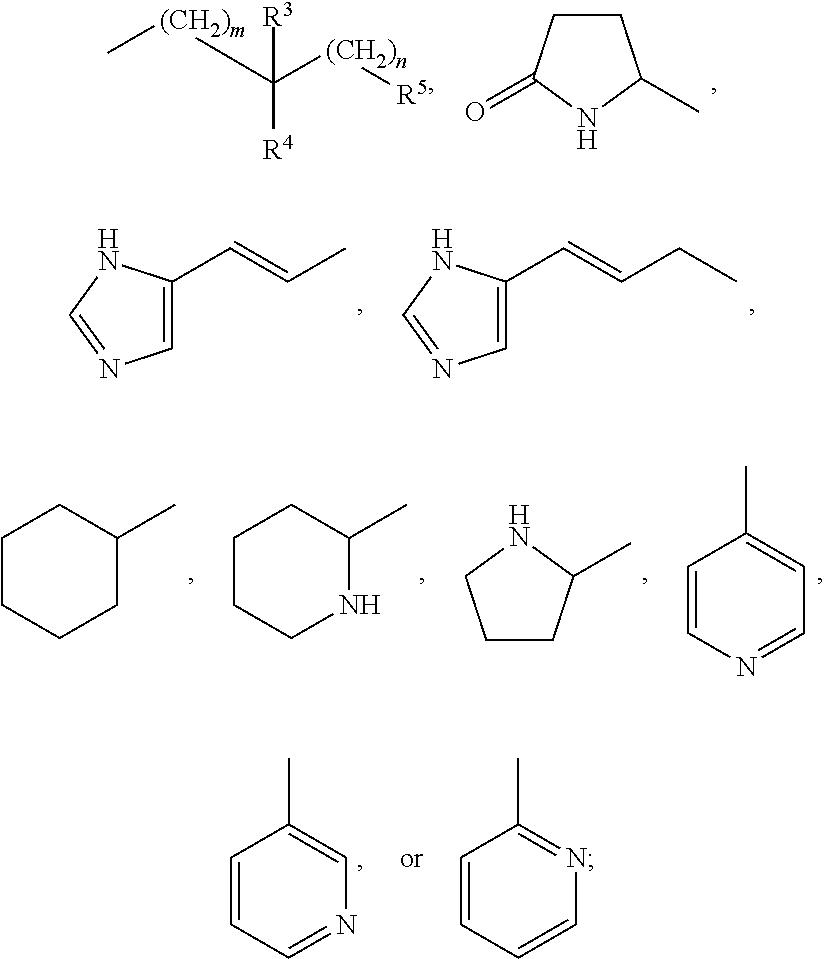Amide compounds, methods for preparation, and use thereof as agents for the treatment and prevention of diseases caused by rna- and/or dna-containing viruses, and concomitant diseases
- Summary
- Abstract
- Description
- Claims
- Application Information
AI Technical Summary
Benefits of technology
Problems solved by technology
Method used
Image
Examples
example 1
Antiviral Activity of the Compounds of Formula I Against Coxsackie Virus In Vivo
[0228]In the study a trypsin-dependent strain HCXV A2 was used, previously adapted and causing death in mice from Coxsackie virus infection.
[0229]The experiment was carried out in white mice weighing 6 to 7 g. The animals were infected intramuscularly with a dose of 0.1 mL / mouse. The used infectious dose causing mortality in mice was 10LD50.
[0230]The ability of compounds to provide a therapeutic effect was determined by the mortality rate of HCXV A2 virus-infected mice in the experimental group relative to the group of untreated animals.
[0231]The studied compounds and placebo were administered orally according to the treatment regimen. Normal saline solution was administered to mice as placebo. Intact animals served as a negative control and were hold in a separate room under the same conditions as the experimental animals.
[0232]For the experiment, groups were formed with 14-15 animals each. Compounds we...
example 2
Antiviral Activity of the Compounds of General Formula I Against Mouse-Adapted RS Virus
[0235]Antiviral effectiveness of the chemical compounds against RSV in an experimental murine model in vivo was determined for human virus hRSV that was previously adapted to the growth in mouse lungs. The animals were infected with the virus at a dose of 0.5 log TCID50 intranasally under brief ether anesthesia in a volume of 0.05 ml / mouse. The studied compounds were administered orally once daily for 5 days according to the treatment regimen at a dose of 30 mg / kg. The first administration was made 24 hours after infection. Normal saline solution was administered to mice as placebo. Intact animals served as a negative control and were hold in a separate room under the same conditions as the experimental animals. Each experimental group comprised 12 animals. Ribavirin was used as a reference drug at dose of 40 mg / kg.
[0236]The antiviral activity of the studied compounds was determined by the efficie...
example 3
Antiviral Activity of the Compounds of General Formula I Against RS Virus in a Murine Model of Suppressed Immune System
[0240]Antiviral activity of the chemical compounds against human respiratory syncytial virus (strain A2, an infectious titer of 5×106 TCID50 / mL) was assessed in a Balb / c murine model of viral pneumonia. The virus was inoculated to animals intranasally in a volume of 50 μL under brief ether anesthesia. The immune response in animals to RS virus was suppressed by intraperitoneal administration of cyclophosphan at a dose of 100 mg / kg 5 days before infection. The studied compounds were administered according to the treatment regimen once daily at a dose of 30 mg / kg for 5 days, starting 24 hours after infection. The activity of the compounds was determined by a reduction in edema of the lung infected with respiratory syncytial virus, compared to the control, on day 5 after infection.
[0241]The results represented in Table 6 for some particular compounds of general formula...
PUM
| Property | Measurement | Unit |
|---|---|---|
| Temperature | aaaaa | aaaaa |
| Fraction | aaaaa | aaaaa |
| Time | aaaaa | aaaaa |
Abstract
Description
Claims
Application Information
 Login to View More
Login to View More - R&D
- Intellectual Property
- Life Sciences
- Materials
- Tech Scout
- Unparalleled Data Quality
- Higher Quality Content
- 60% Fewer Hallucinations
Browse by: Latest US Patents, China's latest patents, Technical Efficacy Thesaurus, Application Domain, Technology Topic, Popular Technical Reports.
© 2025 PatSnap. All rights reserved.Legal|Privacy policy|Modern Slavery Act Transparency Statement|Sitemap|About US| Contact US: help@patsnap.com



